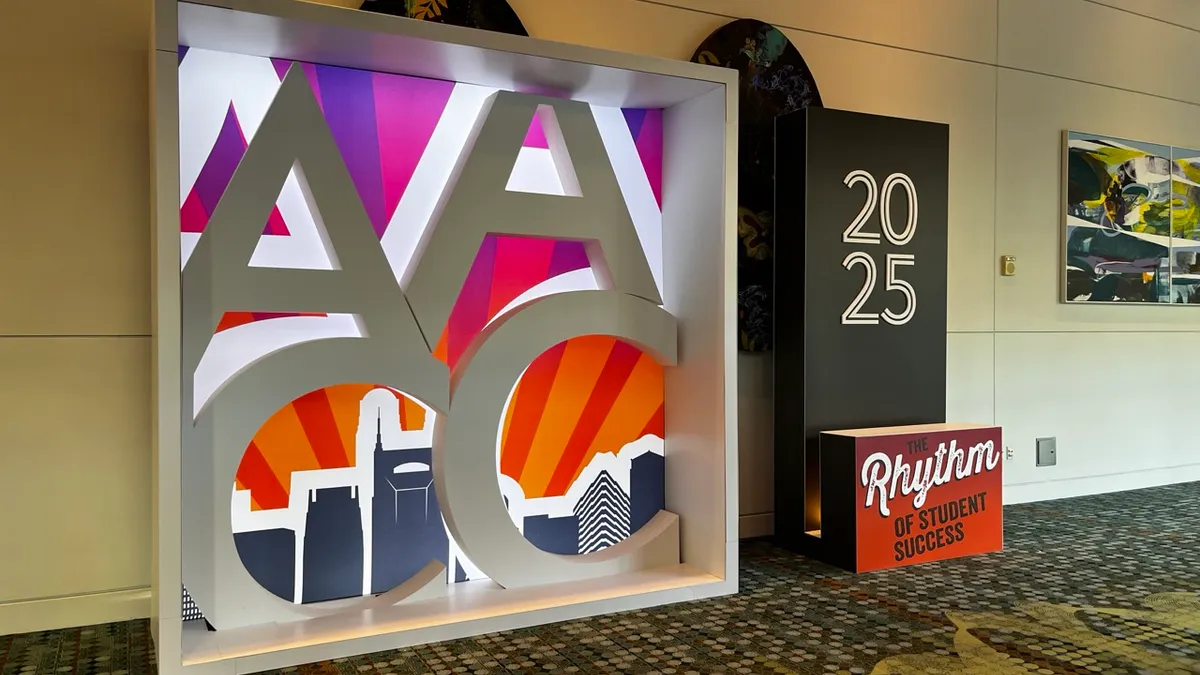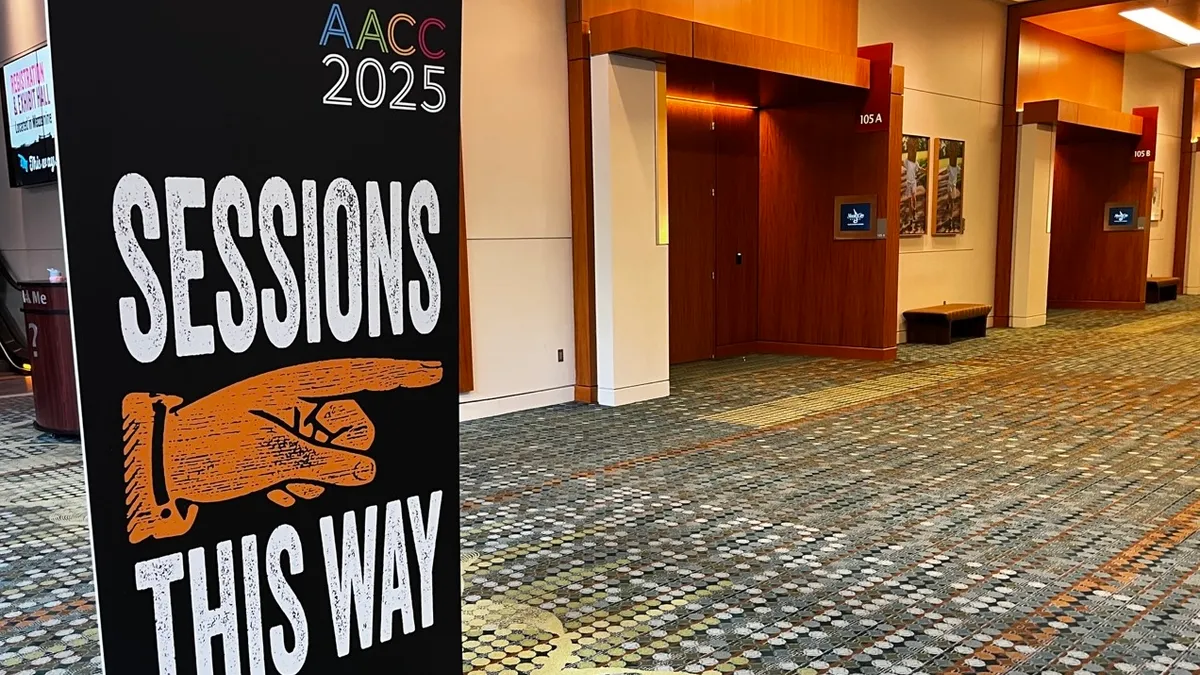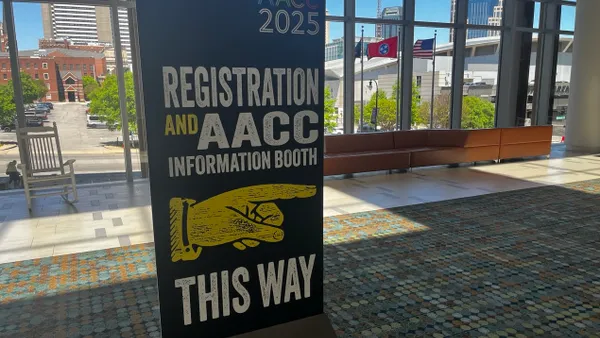Approximately 39 million people in the U.S. have some college experience but no credential, according to a recent report from the National Student Clearinghouse Research Center. That means they likely have some of the debt that comes with attending college, but few of the benefits.
As institutions search for ways to improve enrollment, targeting adults with some college experience might be one way to increase headcounts while helping people achieve personal and professional goals. But in the 2020-2021 academic year, just 2.4% of stopped-out students reenrolled.
Experts say that bringing students back to college after an absence doesn’t have to be a mystery. Here are some of their tips and recommendations.
Think creatively about flexibility
At Morgan State University, a public historically Black university in Maryland, flexibility is about more than just when classes are held.
Of course, scheduling is still critically important, with adult learners having more availability in the evenings and other off times. But flexibility at Morgan State also means the creation of degree options that maximize the number of previously earned credits that can transfer and count towards a credential.
“We worked to create a really flexible degree structure that’s interdisciplinary in nature, that values our students learning in their professional life as well, and helps students come back and use all the credits they’ve previously taken as efficiently as possible to get a degree,” said Nicholas Vaught, interim assistant dean for academics and student success at Morgan State’s continuing studies college, which the university created last year as part of a degree-attainment push.
Students often have to essentially start earning credits all over again when they change majors, such as if they go from nursing to sociology, Vaught said. But interdisciplinary degrees are broader and allow students to build on previously earned credits more efficiently.
Try a neutral navigator
Sallie Glickman is cofounder, president and CEO of the Graduate! Network, a nonprofit organization that works to improve college completion among adults who stopped out of higher ed.
Colleges have important roles to play in that effort, she said, but it’s crucial to recognize the difficult context in which they are working. Public disinvestment in higher education makes it more challenging for institutions to complete difficult work, even if it is of a tremendous societal benefit. Increasing funding for education is critical to hitting reenrollment goals, she said.
About 15% of the adult population has some college credit and no degree, according to the Census Bureau. If they all completed, it would mean additional wealth for communities, Glickman said.
“And that’s more wealth in primarily communities of color and communities that have been historically left behind,” she said. “There’s a big opportunity and it doesn’t all rest with individual institutions.”
To ensure students are going to institutions that are right for them, it can be helpful for colleges and universities to partner with each other. They should work together on advising and navigation for students thinking about going back to school who haven’t enrolled yet, according to Glickman.
Those efforts should be institution-neutral, she said. For example, ProjectAttain! in Sacramento, California, seeks to be a place to start for adults who want to finish their education. The organization says it works with colleges, businesses and other organizations to make transitions to education easy for students.
“The colleges got together to provide a model that was really human-centered,” she said. “Someone who works with a Graduate-trained navigator is four times more likely to return and is 40% more likely to complete.”
Neutral navigation before students matriculate can help them deal with the practical and emotional barriers to reentering college.
“One of the things that happens particularly with low-income adults who have been economically disadvantaged is they often aren’t given a whole lot of choices or options,” Glickman said. “Agency and locus of control is very empowering and helps the individual enter the institution ready to be there, while the institution does all of the things it should do to be student-ready.”
Make it affordable
Cost is always going to be a factor when students are thinking about college, but the specter of debt can be even more influential to adult learners, who have typically been in the workforce for some time.
The Graduate! Network encourages colleges to give out grants, scholarships and emergency funding to adult students. Efforts to cover books, transportation and other nontuition costs can be critical in helping students continue after reenrolling.
At Morgan State, Vaught said starting with low tuition for both in-state and out-of-state students makes price more intelligible to students. Undergraduate tuition is $250 per credit hour, regardless of where a student lives. The university also awards grants and scholarships specifically to reenrollees.
Overall, experts say one of the most important things in attracting, retaining and graduating reenrollees is making it easy. Where things are simple and easily understood, where barriers are brought down instead of thrown up, reenrollees will be most successful.
Offer Credit for Prior Learning
One of the keys to helping students reenroll is to remove academic barriers to success while maintaining rigor. That can sometimes be done by removing academic requirements that are holding students back, like physical education requirements.
In some situations, it may make sense to award students credit for prior learning, even if that learning didn’t take place in a traditional college classroom.
In a study of reenrollees, Higher Ed Insight, an education and workforce development consulting firm, found that credit for prior learning that occurred in military service was an important factor for veterans. Because military-involved students were often receiving greater financial assistance than other students, nonfinancial factors were more important in choosing whether to and where to enroll.
“For those students in particular, the idea of prior learning and whether they can get credit for that experience is a big deal for that group,” said Alisa Cunningham, director of research at Higher Ed Insight.
Understand why people reenroll
It’s often assumed that adult learners returning to school after an absence want to reenroll to give themselves a better standing in the job market. But many reenrollees have deeply personal reasons for continuing their education.
At Morgan State, Vaught said he sees many students who have more emotional reasons for enrolling. A student told their mother they would get a degree, or they pledged to themselves that they would do it.
“So much of the reason they come back is they’re fulfilling a promise they made to themselves,” he said. “In some ways it’s almost like this spiritual fulfillment that is so intrinsically motivating for students to come back and get their degree.”
That’s borne out in data, according to Cunningham. She said that in Higher Ed Insight’s research on people who successfully reenrolled and completed college, almost half said they were motivated by career goals. But 70% included personal goals as part of their motivation.
“You have to support the career goal, but you also as an institution have to support that they have personal lives, that they want to reflect that in their personal goals,” she said.
Understanding student motivations can also be critical to helping students persevere and graduate.
“Adult learners are more intrinsically motivated than their younger peers. Instead of motivated to get the highest grades, they’re motivated for the learning itself,” Vaught said.





















